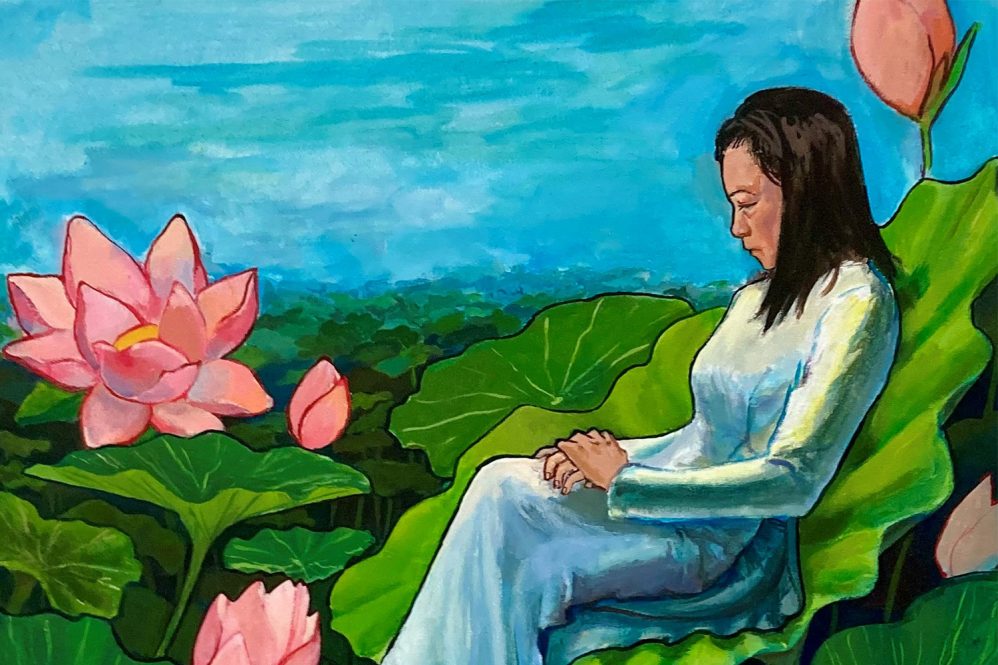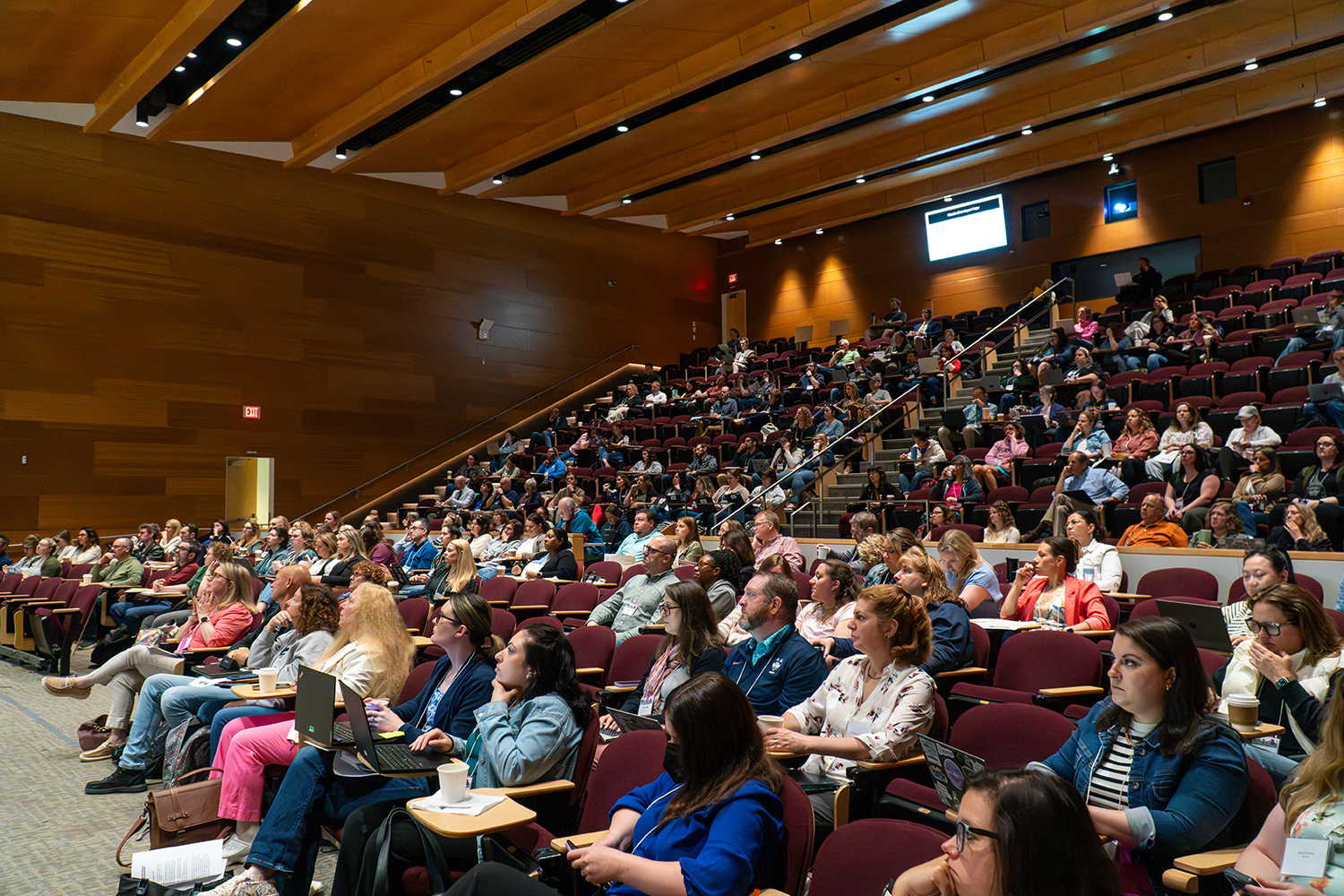 When Irene Pham ’24 (SFA) was little, before they went to school and enjoyed pizza Fridays with friends in the cafeteria, they were as fluent in Vietnamese as a young child could be.
When Irene Pham ’24 (SFA) was little, before they went to school and enjoyed pizza Fridays with friends in the cafeteria, they were as fluent in Vietnamese as a young child could be.
Back then, they’d communicate with their parents and grandparents in the tonal language that they say requires the speaker to almost sing. When they went to school, though, English became first nature and bit by bit their ability to speak Vietnamese vanished.
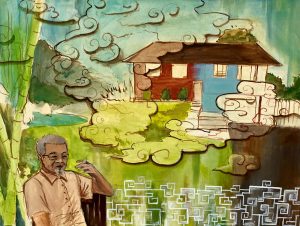
“If I were to ask any of my older relatives to tell me their personal stories in English, their experiences during and after the war and their experience coming to the United States, I don’t think I would get the emotional breadth that they would want to express,” Pham, who uses they/them pronouns, says. “My mom is fluent in English, my dad is too, but I don’t think they would be able to say precisely how they feel except in Vietnamese.”
Conversely, Pham says they have trouble expressing themself to the rest of the family. It’s an intergenerational struggle exacerbated by the tug of cultures, languages, and history.
In “From Grandfather to Mother, From Mother to Daughter,” Pham’s most recent art exhibition on display in the Department of Art and Art History where they’re studying painting and drawing, Pham seeks to convey their emotion without words – feelings of rebirth, love, and reflection – to the very family members at the center of it all.
“It’s a little dodgy in my opinion, but it’s one step forward,” they say.
Pham’s parents emigrated from Vietnam in their early 20s, born after the Vietnam War yet still influenced by its long-lasting effects on the country. Pham had a traditional Vietnamese home life – pho and bun bon hue on the table at dinner.
Their upbringing as a second-generation immigrant was sheltered, they say, an effect of the atrocities their parents and grandparents experienced. People were safe when they were home. Even friends’ houses, especially when their parents were strangers, weren’t safe enough.
“What that did was isolate me more than other people in my age group. I never knew what it was like to just walk around, or use a map,” they say. “I also grew up in a very suburban town, so wherever you needed to go you needed a car, and when you need a car as a child, adult supervision comes with it.”
Pham’s first year at UConn happened in the fall of 2020, still in the throes of the pandemic. Their second year included relaxed restrictions, campus living, and finally the feeling of being out in the world during a time of self-discovery.
They considered getting a tattoo but landed on a platinum streak across their dark hair.
“Body modification is looked down upon in traditional families,” Pham says. “I talked about it for a long time and my mom kept saying, ‘No, you can’t do that.’ But I went ahead and did it anyway, and she got really upset, which meant I got really upset. That was the kicker for a conversation about who owns my body. Does she own it or do I?”
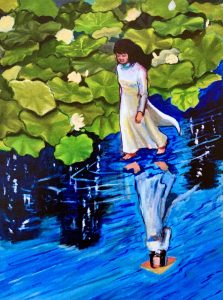
Winter break that year included rubs from family members who quipped about the so-called freshman 15 and an imperfect complexion, Pham says, and prompted upset all around.
But when their mother’s father, separated and living across the country, told Pham not to upset their mother, “It was like a giant spark in me, and I knew we needed to unpack all of this. That’s what this project is all about,” they say.
With financial support from the UConn IDEA Grant Program through the Office of Undergraduate Research, Pham created about a dozen paintings for “From Grandfather to Mother, From Mother to Daughter,” including one of their absent grandfather whose leaving caused strife in the family.
“My work has a lot of Buddhist and Vietnamese imagery,” Pham says. “I’m trying to reinforce this willingness to rebirth oneself. You’re always going to have to experience change, especially as immigrants who have to change the way they think because that’s the nature of moving somewhere else.”
Several of their pieces depict people walking forward or stopping to look back, a sort of self-reflection that’s healthy, they say, when one looks back to see from where they’ve come.
“This one is my mom,” Pham says pointing to the painting of a women with hands crossed and eyes closed. “She’s sitting on a lotus, that’s the national flower of Vietnam, and lotuses in Buddhism represent rebirth. A lot of the other imagery here is moments in time or transitional moments.”
Pham shows some of these snapshots in time – a child, a mother and daughter, the outside of a building – on an enlarged replica of a lotus root. Lotus flowers have deep roots, they explain, and it’s common in Vietnamese cuisine to eat slices of the root, which has holes in it much like Swiss cheese and is where Pham painted those snapshots.
On a three-section piece of artwork, each representing a Buddha bead, Pham painted family portraits. Their mother is a Buddhist nun, while their grandfather was a Buddhist practitioner, and they say they wear their collection of stone and wood beaded bracelets as a reminder of who they are.
“When I was growing up and got whiny about something my dad would always tell me that when he was a kid, he sold potatoes for money,” Pham says. “I have a recording of my grandmother telling me her war story, but I have to translate it into English because I can’t understand it, sadly.”
Their family speaks with a southern accent, they say, and, even if they were to take language classes, there are nuances in the way they speak. Pham easily would be picked out as a nonnative speaker.
That may be one reason they’ve never visited the country.
It’s not that they don’t want to, Pham says. Flights are expensive, and whenever they suggest a village to visit, their mother notes that it’s not a village anymore. The small locales from where their family came have become tourist destinations or attractions for YouTubers.
Painting is a way for Pham to reconcile the ever-present internal conflict of the past versus present, young versus old, contemporary versus traditional.
“I really liked cats as a little kid, and every day I would just draw cats, realistically or unrealistically in cartoon form,” they say of their artistic origin story. “And the internet exposed me to different styles of art. That kept developing and I thought I should do this as a career. It’s a way for me to be vulnerable and bring out the vulnerabilities in others.”
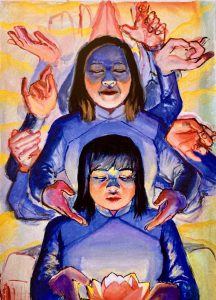
One of the first paintings Pham created in the immigration series shows the palms of eight hands, fingers curled in, with wrists forming a wreath around a bright sun in the center. Lotus petals make a bed behind the hands.
“It’s meant to represent the hands of the Buddha,” Pham says. “At some Buddhist temples, there are statues with Buddha or another figure having hundreds or thousands of hands surrounding him. What it represents to me is that we are all trying to help each other. And these hands represent the way that we continue to heal from the things we’ve suffered. Rebirth through healing and rebirth though helping other people.
“The other painting here, with the mother and daughter surrounded by hands, it’s the immigrant parent trying to help the child, but it’s not help the child needs or wants,” they continue. “A lot of older Asian relatives have their opinions about what you should and shouldn’t do, and they tell you because they want to help. Sometimes it comes off in not a great way, but it’s all done through love.”
As is Pham’s art.
“From Grandfather to Mother, From Mother to Daughter” is on display through Saturday, March 30, in the VAIS Gallery, Room 109, in the Art Building.
